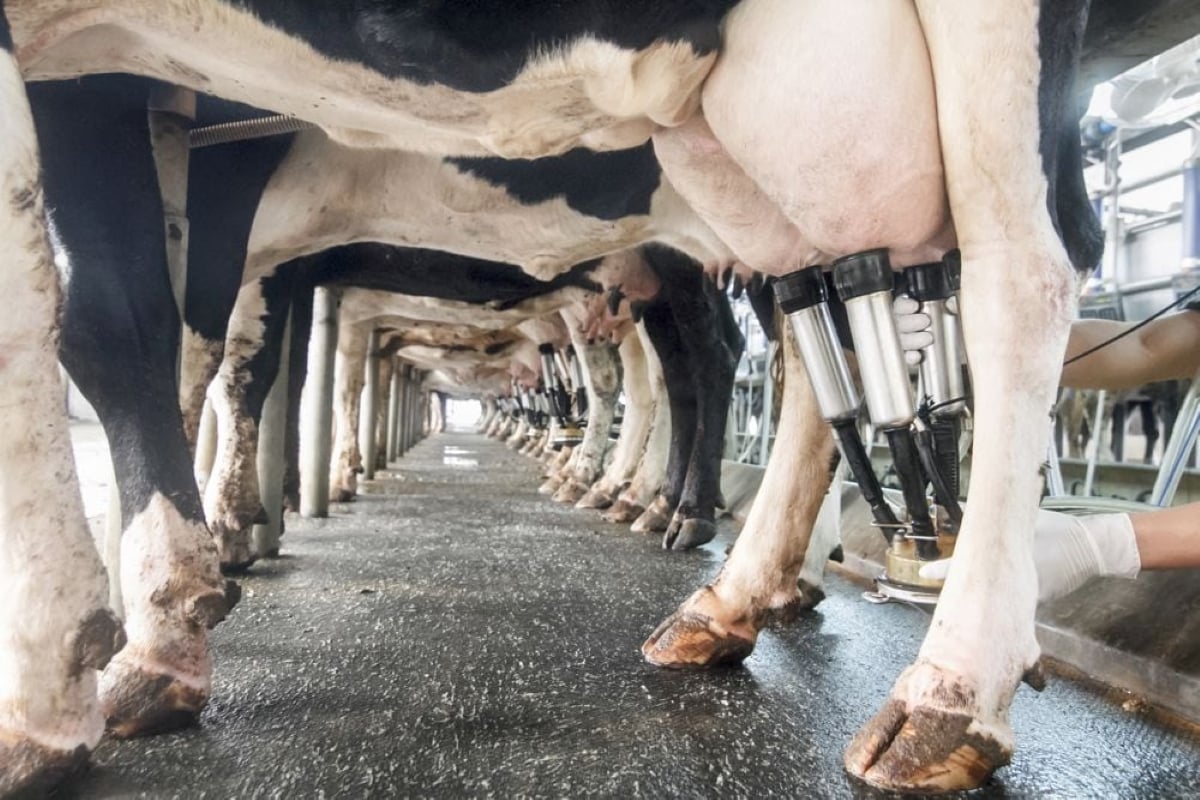WASHINGTON, D.C. — Stephen Powles is not optimistic about the future of glyphosate in Canada and the U.S.
Powles, a farmer and weed scientist at the University of Western Australia, said the herbicide might have a shorter lifespan than farmers’ imagine.
“I’m going to make here a very bold prediction: glyphosate will be driven to redundancy, on driver weeds, in large parts of (North America),” Powles said at a herbicide resistance summit in Washington Sept. 10.
“Driver weeds are the weeds that farmers make their weed control decisions. They’re the big weeds that we all know about, and glyphosate will be driven to redundancy.”
Read Also

Farm gate milk price to rise in 2026
The Canadian Dairy Commission will raise its farm gate milk price by 2.3255 per cent in February, the Crown corporation announced on Friday.
The Weed Science Society of America organized the summit, which attracted academics, representatives of the crop protection industry, commodity group members and farmers from the U.S. and Canada.
The objective of the summit was to find solutions to the herbicide resistance problem, but many participants at the session are in agreement with Powles: the situation will get worse before it gets better.
More than 87 percent of attendees said it’s unlikely that farmers in the U.S. and Canada will adopt diverse weed management tactics to prevent herbicide resistance on their farm.
“I would say that most growers (in Ontario) are reactive, not proactive, in implementing herbicide resistance management strategies,” said Peter Sikkema, a University of Guelph weed scientist, during a coffee break at the conference.
Powles said glyphosate could become a worthless herbicide because North American farmers and the wider ag industry suffer from a condition he calls HOS: Herbicide Only Syndrome.
When growers and ag consultants are faced with herbicide resistant weeds, the prescription almost always involves applying more herbicides and different modes of actions, Powles said.
Crop science companies are introducing genetically modified soybean and corn crops with tolerance for glyphosate and other herbicides, such as 2,4-D and dicamba.
Powles said this technology would ultimately fail because growers will continue to apply glyphosate, causing increased selection pressure for glyphosate resistant weeds.
He said adopting diverse tactics to control weeds, like weed seed destruction at harvest and strategic cultivation, is the only way to maintain the long-term efficacy of glyphosate and other herbicides.
“If HOS is replaced by diversity, then herbicides can be much more sustainable.”
John Davis, a farmer from Ohio, said weed experts shouldn’t be so negative. Farmers in his area are adopting diverse methods, like cover crops, to combat herbicide resistance.
“The growers listen, probably more than you give them credit for. And they apply what you tell them, more than you give them credit for.”
While he fears for the future of glyphosate, Powles said there is a chance that American and Canadian farmers can preserve the vital herbicide.
“If you are in an area of (North America) where glyphosate still works, do everything you can to intervene because glyphosate is a one in a 100 year chemical,” he said. “Ladies and gentlemen … try to prove (my) prediction to be wrong. I would love to see action taken, and action can still be taken in many parts of (North America).”














